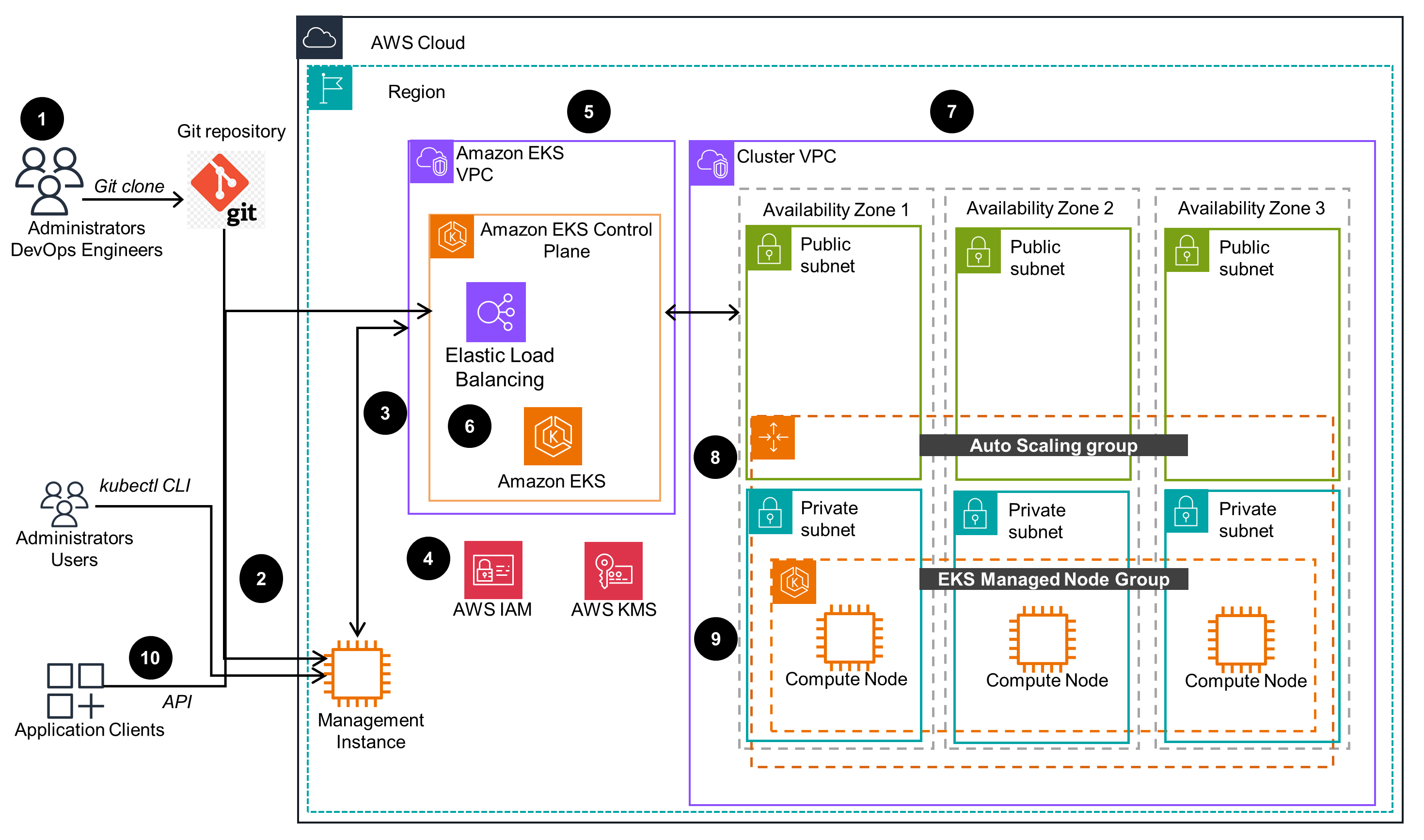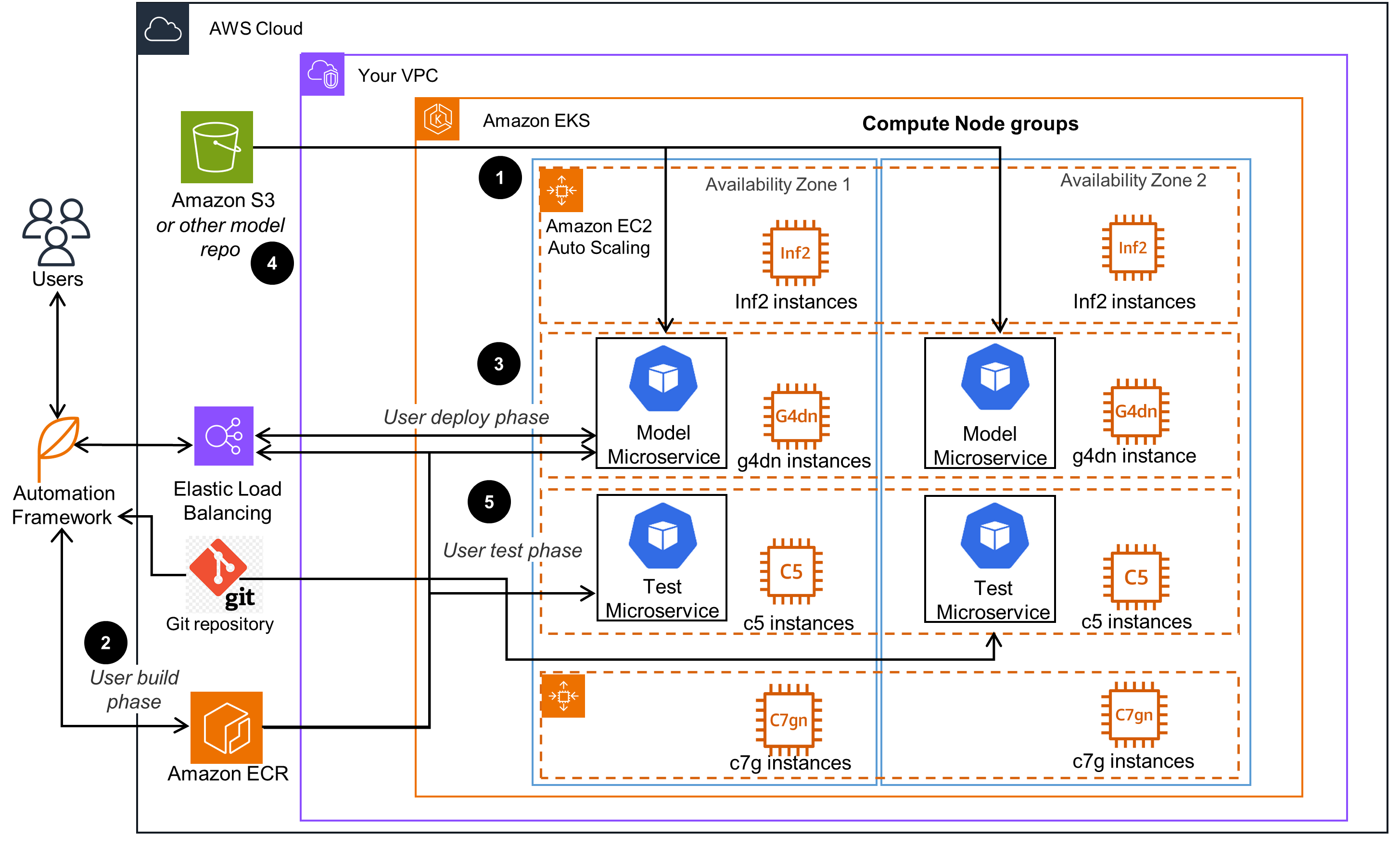Overview
How it works
Infrastructure
This infrastructure diagram provides a way to setup an Amazon Elastic Kubernetes Service (Amazon EKS) cluster that is compatible with this Guidance. Optionally, a pre-existing Amazon EKS cluster can be used. To learn more about running inference workloads on this infrastructure, open the Architecture tab.

Architecture
This diagram provides a simple, scalable, and highly available architecture for running machine learning (ML) inference workloads on AWS. It uses a standard Amazon Elastic Kubernetes Service (Amazon EKS) infrastructure that can be deployed across multiple Availability Zones for high availability. For instructions to setup an Amazon EKS cluster compatible with this Guidance, open the Infrastructure tab.

Well-Architected Pillars
The architecture diagram above is an example of a Solution created with Well-Architected best practices in mind. To be fully Well-Architected, you should follow as many Well-Architected best practices as possible.
Deploy with confidence
Everything you need to launch this Guidance in your account is right here
Disclaimer
Did you find what you were looking for today?
Let us know so we can improve the quality of the content on our pages